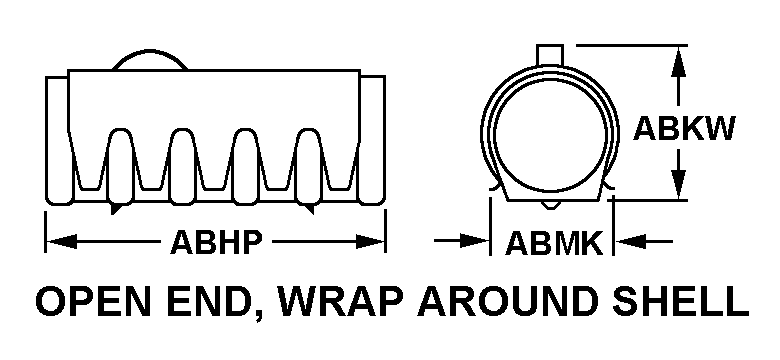6160015769403
Price Quote Get an up to date pricing and availability quote for this product. Order online or over the phone.
Quality Commitment
Serving our customers with quality and safety first.
- AS9120 Certified
- Audited supply chain
- ITAR Registered
- DDTC Registered
- HAZMAT Certified
- Customer service objectives
- Every product 100% inspected

6160-01-576-9403 Specification Set by the OEM (see RNCC code 3)
lamp, incandescent; p/n 35w custom to spec
the buoy POCKET-COVER-BATTERY-Pack holder assembly is employed on 7 footx 20 foot ice buoys. it is an epoxy primered and top coated, 12 1/4 inch diameter x 1/4 inch wide steel plate with two, 6 inch long x 2 inch high x 3/8 inch diameter steel handles welded to the exterior surface, a 3/4 inch diameter NPT-Tapped hole in its center, to accommodate anylon watertight power cable feed through, four equally centered 3/8in. holes ae drilled into the plate, on an 8-3/16 inch diameter b.c., that accept four 3/8 inch x 4 inch long (for single battery pack) , or 7 inch long (for two battery packs) PARTIALLY-UNC-Threaded, 316 stainless steel bolts, with nuts, washers and nylon flat washers. a 9inch diameter NON-Conductive bottom plate, with four 3/8/inch EQUALLY-Spaced holes drilled on an 8-3/16 inch diameter b.c, is uded to secure the mounted 9.5 inch diameter x 2.75 inch wide lithium THIONYL-Chloride battery pack (s) tothe battery pocket cover plate and to compress the pack (s)
steel
open end, wrap around shell
Cross Reference Parts Part numbers that meet the specification outlined on this page and set by the OEM
Identification Item Identification Guide (IIG) and Item Name Code (INC)

Definition Definition of approved item name (AIN): "RETAINER,BATTERY"
An item designed to position and/or restrain the movement of one or more batteries in their normal mounting position. See also tray, battery and battery box.
6160-01-576-9403 Material Hazmat, Precious Metals, Criticality, Enviroment, and ESD
Indicates there is no data in the hmirs and the nsn is in a fsc not generally suspected of containing hazardous materials.
Item does not contain precious metal.
No known electrostatic discharge (esd) or electromagnetic interference (emi) sensitivity.
Represents items with no adp components
The item does not have a nuclear hardened feature or any other critical feature such as tolerance, fit restriction or application.
Identification Codes
HMIC: Hazardous Material Indicator Code. A one position code that identifies a hazardous item.
PMIC: Precious Metal Indicator Code. A one position code which identifies items that have precious metals as part of their content. precious metals are those metals generally considered to be uncommon, highly valuable, and relatively superior in certain properties such as resistance to corrosion and electrical conductivity.
ESD: Electrostatic Discharge. Indicates if an item is susceptible to electrostatic discharge or electromagnetic interference damage. electrostatic discharge damage occurs when an accumulation of static electricity generated by the relative motion or separation of materials is released to another item by direct contact. electromagnetic interference damage occurs when an item comes into proximity with an electrostatic or magnetic field.
ENAC: Enviromental Attribute Code. Identifies items with environmentally preferred characteristics.
CRITL: Criticality Indicator Code. Indicates an item is technically critical by tolerance, fit, application, nuclear hardness properties, or other characteristics.






